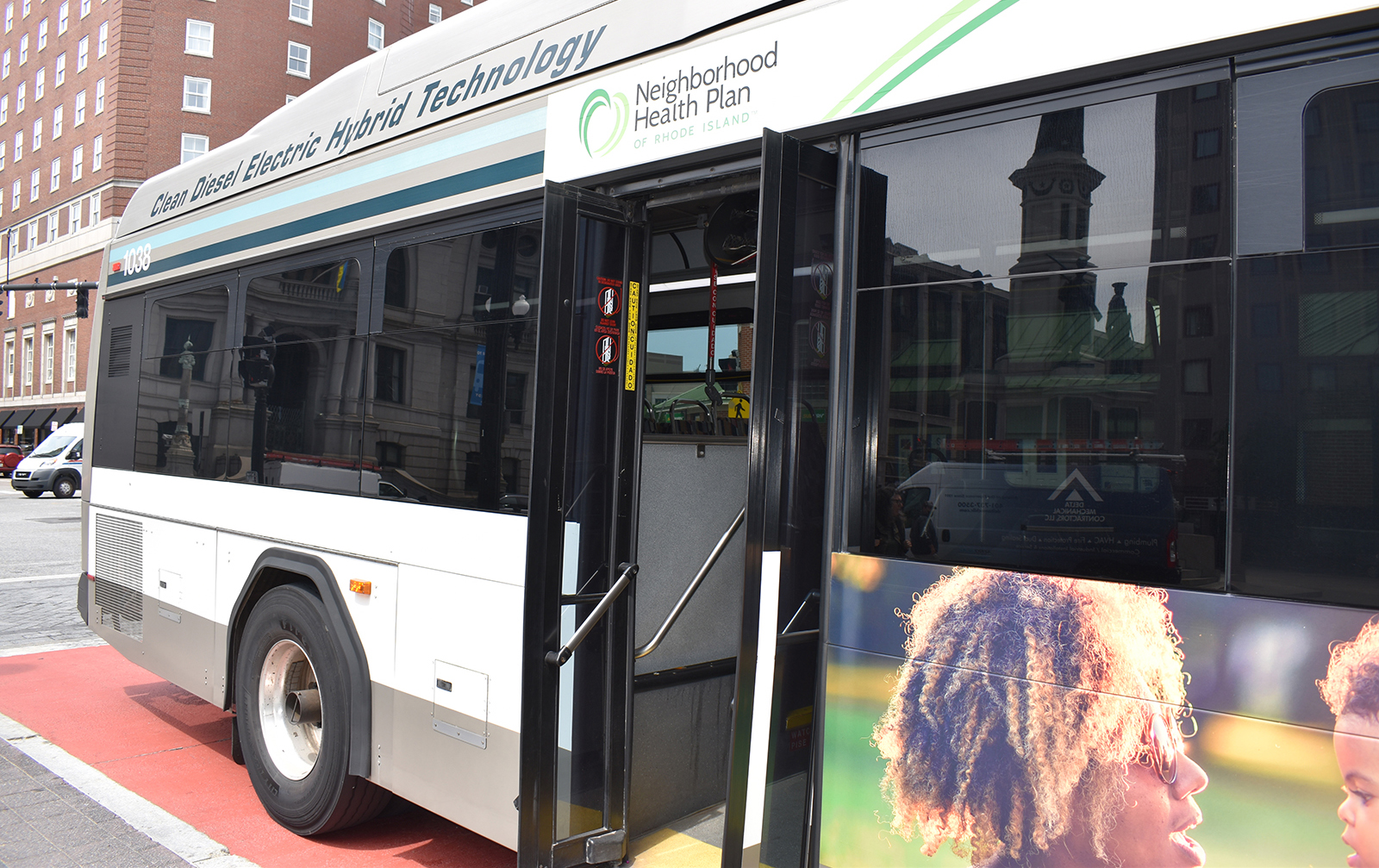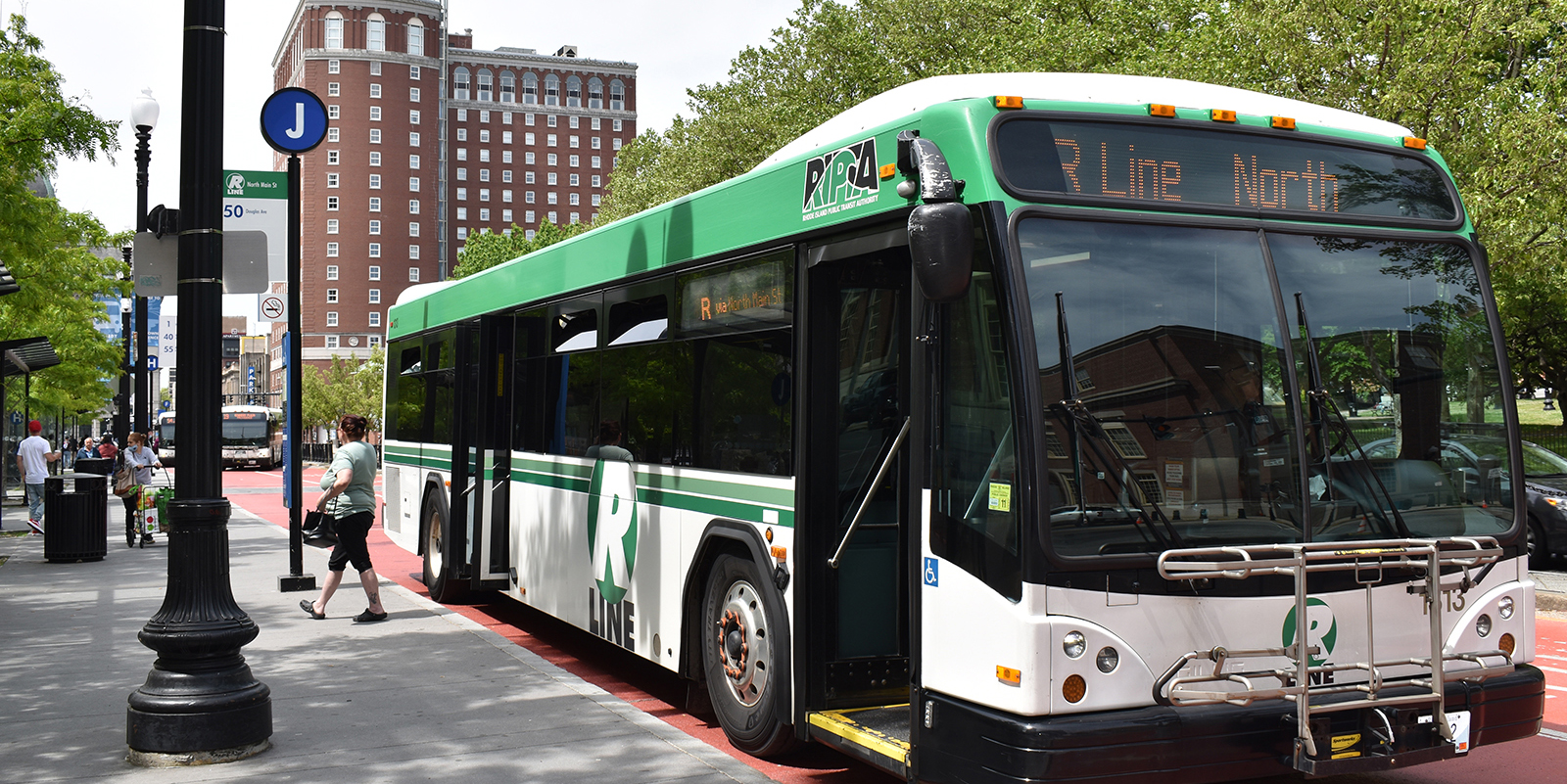This is Only a Test: Autonomous Bus Service Underway
May 17, 2019
PROVIDENCE — While pickup trucks, SUVs, and luxury cars remain the vehicles of choice for many drivers, Rhode Island is looking ahead to a time when transportation may not revolve around vehicles that require human drivers and an endless thirst for gasoline.
The vision, at least in cities, is to expand past and new modes of transportation. State and municipal planners are advocating for urban neighborhoods that are more conducive to walking, biking, and taking bus and rail. Concepts include a proposal by Grow Smart Rhode Island for a rapid-rail line between Pawtucket and Warwick.
Electric and autonomous vehicles, along with low-carbon electric buses, are the new mobility entrants to join the Rhode Island Public Transit Authority (RIPTA) fleet. This week, the Rhode Island Department of Transportation (DOT) launched Little Roady, a self-driving shuttle service.
“Today we are at the forefront of autonomous vehicles,” Gov. Gina Raimondo said at a May 14 press event.
The fleet of six-seat, low-speed shuttles offer free drop-off and pickup along a 5.2-mile loop between the train station and Olneyville Square, a route currently without RIPTA bus service.
Despite all of the praise for the innovate mode of transit at the kickoff and 500 hours of testing at the Quonset Business Park in North Kingstown, the mantra of the day was: “This is a test. This is only a test.”
The $1.2 million public-private partnership was only funded for one year, with settlement money from the Volkswagen emissions scandal and the Federal Highway Administration. DOT has the option to continue the service for two additional years, but no source of funding has been named.
Speakers referred to the experimental service as a research and fact-finding project to learn about autonomous vehicles and how they fit into public transit and long-term transportation plans for Rhode Island and other states.
Data about ridership and impacts on the workforce and environment will be analyzed by a research team that includes Brown University, Brooklyn-based urban planners 3X3 Design, data firm STAE, and the Massachusetts Institute of Technology.
“It’s about collecting the data so that we can learn from this, so that we can use that to take it to the next level,” Raimondo said.
For now, the vehicles will have attendants at the wheel, or what’s called a T-bar, to monitor the driving and override the controls to respond to the ever-changing urban streetscape. Censors on all sides and on top of the vehicles identify and adjust to potholes, pedestrians in a crosswalk or on the sidewalk, and even slow for birds darting in front of the van.
What is learned from the mini-bus service will inform the Rhode Island Transportation Innovation Partnership (TRIP), a study of autonomous transportation by RIPTA, DOT, the state’s Division of Motor Vehicles, and the Quonset Development Corp.
May Mobility Inc., of Ann Arbor, Mich., will run the service and maintain the vehicles. The company launched an autonomous shuttle service for a Detroit company in 2018. May Mobility’s chief operating officer, Alisyn Malek, said Little Roady is the first autonomous public transit service.
The Little Roady shuttle service will operate seven days a week from 6:30 a.m.-6:30 p.m. and service 12 stops along Valley Street, Promenade Street, and portions of Delaine Street and Smith Street around the Statehouse. See a live map of shuttle locations here.
Categories
Join the Discussion
View CommentsRecent Comments
Leave a Reply
Your support keeps our reporters on the environmental beat.
Reader support is at the core of our nonprofit news model. Together, we can keep the environment in the headlines.
We use cookies to improve your experience and deliver personalized content. View Cookie Settings




I happen to live in one of those urban neighborhoods that are more conducive to walking, at least on parts of the sidewalk that are not so badly in need of repair or roads that have holes on the edge that you have to be careful not to step into. In some places, if you happen to twist an ankle and fall the wrong way you would get hit by a car. I know there is only so much money to go around and decisions have to be made, but we do tend to get ignored down here at the south end of the state until people in Providence want to go to the beach or spend some time in nature. Driver-less transportation is a nice experiment, but not the best way to allocate funds, IMHO.
Funny, how the shuttle misses Kennedy Plaza where I suspect many people would benefit from a lift between the bus stop and the train station. Such a connection would create an incentive to use a RIPTA bus to get to the train station instead of taking a car and paying exorbitant parking rates.